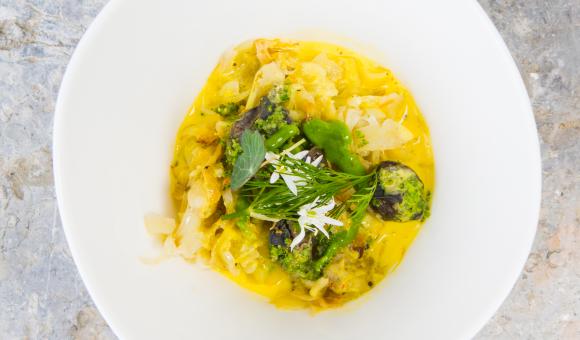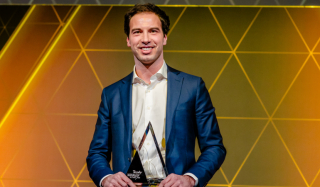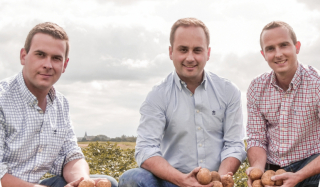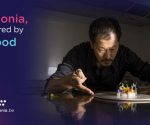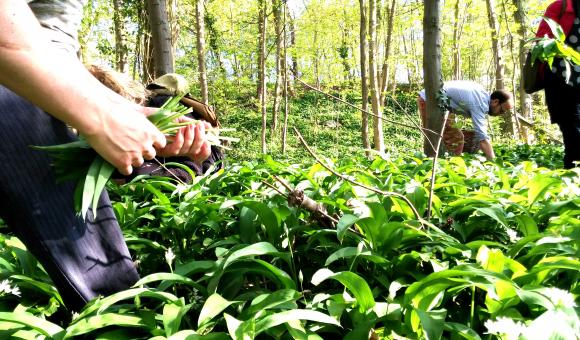
Growing wild: Cuisine Sauvage promotes edible plants with foraging walks, cooking classes and gourmet tours
Environmental consultant turned wild food campaigner Lionel Raway believes he has found the perfect recipe for his non-profit wild plant association, Cuisine Sauvage. “By reconnecting people with nature, opening their minds to the potential of harvesting plants, there is the possibility of some food self-sufficiency,” he says.
From the airy interior of the newly renovated cookery school in a villa on the outskirts of Namur, Raway explains his philosophy: “A two-hour walk in the forest gives sufficient knowledge of four to five plants that provides people with some autonomy.” He adopts a pragmatic approach to promoting the benefits of wild food. “Cooking with plants is not a religion or a dogma – we are not saying that they are better – simply that they also exist.”
Benefitting from financial support from the Walloon Region, “which considers it better to prevent than to heal”, Cuisine Sauvage’s underlying educational philosophy is presented in the form of leisure activities. “We are in the world of play, interactivity and exchange,” he says. “Wild plants speak to us all as they touch on wellness and health, on pleasure, on our purse, and it’s a multi-sensorial experience to pick a plant, touch it, smell it and eat it, which is the greatest connection to nature.”
The association, founded in 2011, encourages the public as well as companies, school groups and chefs to introduce wild plants into their diet. Nature walks and cookery classes are organised in Brussels and Wallonia, available on demand in private homes in a programme that runs from April to October.
Visible from the school’s windows, the Mosan Valley is a perfect playground for foraging and harvesting plants. “We visit the sites, we pick plants, then we prepare the various dishes in groups before eating them together around this large communal table,” says Raway, indicating the knotted blonde slab of wood that forms a convivial centrepiece.
For discovery tours of gourmet wild plant cooking, participants hop into go-karts, known as cuistax, for a carbon- and waste-free experience around Namur’s citadel. Catering for between 100 and 400 people, they have enormous potential for international companies, says Raway: “There are panoramic views of the valleys, we explore tunnels, descend the citadel’s streets and of course eat and drink in some of the best restaurants that are reserved for us.”
Namur has a gastronomic reputation and Cuisine Sauvage is popular with local chefs. “They want to be in the avant-garde and see edible plants as a free and abundant resource. When they prepare a dish with wild plants in their restaurants, they are serving as ambassadors,” he says. Having also trained a chef and a naturalist, he appreciates their enthusiasm. “When we go into the woods and ask them to smell something, they immediately start imagining food pairings and that’s really fun; we learn something too.”
One challenge for the association is helping people overcome their natural fear of eating plants. While it’s frequently quoted that 96% of all plants are safe to consume, Raway says 80% are good to eat and only around 10% are tasty. He prefers to concentrate on the last group, a nevertheless extensive list that includes wild garlic, chervil, nettles, dandelions, garlic mustard, cuckoo flower, chestnuts, poppies, pine, wild strawberries, daisies, hops, cob nuts, wild sorrel, wild blackberries, sage and elderflower.
One of these, nettles, grow abundantly in many a garden. Raway refers to it as an example of the long-term advantages of eating such produce. “By occasionally eating nettle soup, there are two benefits: connecting with nature and reducing your carbon footprint. For each kilo of vegetable you produce yourself, that’s one kilo that has not been grown, fertilized, harvested, stocked, transported, wrapped in plastic, delivered to stores, barcoded, transported by you and eventually thrown in the bin,” he says.
While there’s nothing new in the wild plant movement – “it’s been around for thousands of years” – Raway is convinced of its future: “Up to now, I had the feeling that eating wild plants was a marginal activity. We know now that the planet is in difficulty and we don’t know what we will be eating and how we’re going to feed the world, but it’s clear that among the panoply of options, there are wild plants. It’s just necessary to give people the desire to take advantage of the nature around them.”
By Sarah Crew
